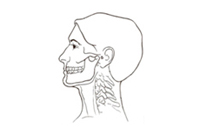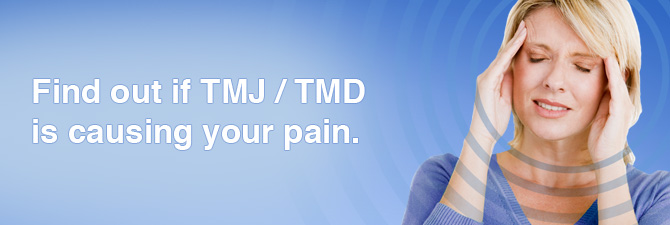San Antonio, Texas
Temporomandibular Joint syndrome (TMJ), also known as TMD (TM-Disorder), causes symptoms that range from mildly annoying to excruciatingly painful. Some people suffering from severe TMD cannot eat foods that require chewing or opening the mouth wide enough to bite. Dr. Hale in San Antonio, Texas, has the world’s best training in Gneuromuscular dentistry*. You are in excellent hands here for obtaining definite information, accurate diagnosis, and effective treatment for TMD.
Some indications that you may have TMJ syndrome include:
- Pain and/or limited ability to open the mouth
- Headaches, teeth, jaw, facial, and even neck, shoulder and back pain
- Clicking or popping noises in the jaw joint
- Worn, cracked or loose teeth
- Teeth that are sensitive or painful
- Tinnitus (ringing in the ears)
What Exactly is TMJ?
The two temporomandibular joints, one on each side of the head, can be felt by putting a finger in front of each ear and opening your mouth. They consist of a ball and socket separated by a cartilage disc. When considering the TMJ, Dr. Hale looks not only at the joint itself, but also at its muscles and ligaments, blood vessels, and nerves. This system makes it possible for us to open and close our mouths, and these components usually work seamlessly with one another when we eat and speak, smile, laugh, and yawn. When one or both becomes problematic, we suffer.
Gneuromuscular dentists such as Dr. Hale refer to the act of closing the mouth as our bite, or occlusion. Many times the condition causing TMD originates from a misaligned bite – a malocclusion. Dr. Hale can determine if it is, indeed, your bite that is causing your TMD discomfort. Once TMD has been determined, your TMJ pain can be relieved and a treatment decided upon.
Treating TMJ
Treating a misaligned bite takes a slightly different course with each individual.
- The jaw joint itself may need treating. Sometimes TMJ is caused by an accident, a blow or trauma to the side of the head which knocks the jaw joint out of alignment. In that case, the bones and their cartilage pad may need to be worked on directly by a physician.
- The jaw muscles may need to be retrained. This can be done with an orthotic, custom-designed for you. It would be worn for several months to gently nudge the muscles and teach them to stay in their natural, relaxed positions.
- Teeth may need to be repositioned or reshaped to create a smooth meeting of upper and lower teeth. In a mild case of TMJ, porcelain crowns can be made to subtly build up certain teeth. Or small amounts of enamel can be strategically removed to reduce certain teeth. In both cases, the bite then becomes well-aligned.
- Dr. Hale may recommend a course of orthodontic work to reposition all the teeth. This could possibly be done using Invisalign rather than traditional braces.
Questions about TMJ
Causes of TMJ
Bite Splints
TMJ and Extreme Headaches
Gneuromuscular vs. General Dentistry
Why see a Gneuromuscular Dentist

Describe Your TMJ
Printable Form (PDF)
To help us better understand your specific pain points and determine the ideal treatment, please print this form. Circle all symptoms that apply to you and bring it to your TMJ consultation.



